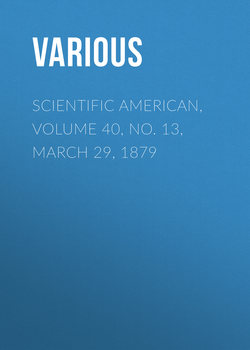Читать книгу Scientific American, Volume 40, No. 13, March 29, 1879 - Various - Страница 13
REMEDY FOR THE NEW CARPET BEETLE
ОглавлениеNoticing a statement made by Mr. J. A. Lintner, to the effect that the Persian insect powder would probably prove unavailing as a remedy against the ravages of the new carpet beetle (Anthrenus), W. L. Carpenter, of the U.S.A., was led to institute some experiments with this well known insecticide, the results of which he communicates to the current number of the Naturalist. A small quantity of the powder was introduced, on the point of a penknife, under a tumbler beneath which various insects were consecutively confined. The movements of the insects brought them in contact with the poison, which readily adhered to their body; in endeavoring to remove it from their appendages a few particles would be carried to the mouth and thence to the stomach, with fatal effect. The results were briefly thus: A honey bee became helpless in 15 minutes; a mad wasp in 8 minutes; a small ant in 5 minutes; a large butterfly resisted the effects for over an hour, and apparently recovered, but died the next day; a house-fly became helpless in 10 minutes; a mosquito in 15; and a flea in 3 minutes. In experimenting on beetles, an insect was secured as nearly the size of the carpet beetle as could be found. It was easily affected, and became helpless in 12 minutes.
In these, and experiments with various other insects, the scent from the powder did not produce any bad effect on those subjected to its odor where actual contact was not possible; but when carried to the mandibles the effect was to produce complete paralysis of the motor nerves. The experiments prove that all insects having open mouth parts are peculiarly susceptible to this popular insecticide. As a result, the writer does not hesitate to recommend the powder to housekeepers as an infallible agent in destroying the carpet beetle and preventing its ravages. The Persian insect powder liberally sprinkled upon the floor before putting down a carpet, and afterward freely placed around the edges, and never swept away, will suffice to preserve a large sized carpet. No ill effects from its use need be feared by the householder, since the drug is poisonous to no kinds of animals except insects.
Banana Flour
The banana has recently found a new use in Venezuela. It has the property of keeping the soil moist round it, in a country where sometimes no rain falls for months; so it has been employed to give freshness, as well as shade, to the coffee plant, whose cultivation has been greatly extended (Venezuela produced 38,000,000 kilogrammes of coffee in 1876). The Venezuelans can consume but little of the banana fruit thus furnished, so that attention is being given to increasing its value as an export. At the Paris Exhibition were samples of banana flour (got by drying and pulverizing the fruit before maturity) and brandy (from the ripe fruit) The flour has been analyzed by MM. Marcano and Muntz. It contains 66.1 per cent of starch, and only 2.9 of azotized matter.
